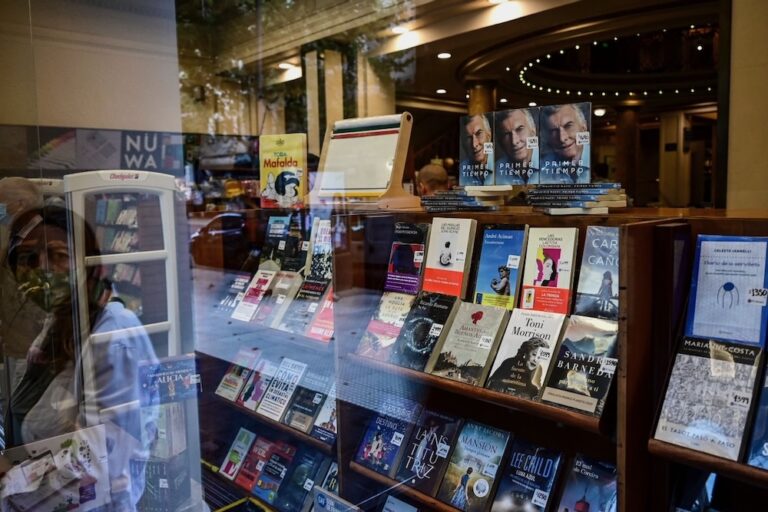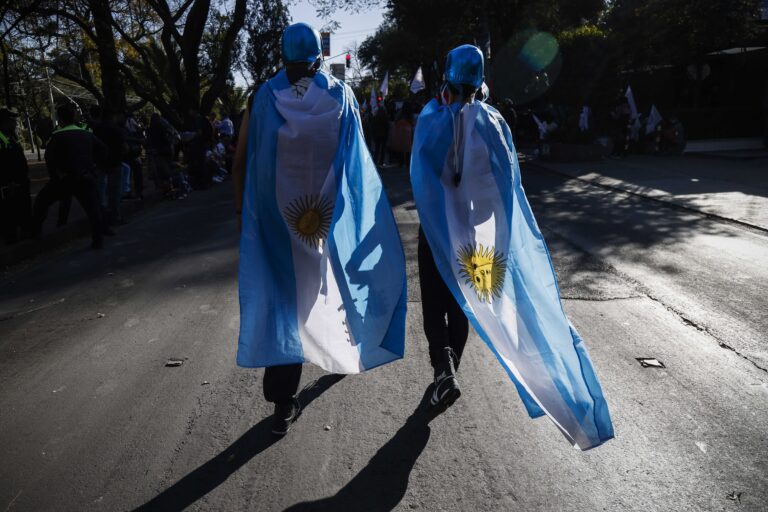Forty years after his murder, the often surreal life of Argentina's most renowned journalist-activist still captivates the imagination of the world.
With a typewriter and paper you can move the people to an incalculable degree. Of this, I don’t have the slightest doubt.
On 25 March 1977, at around 1:30 p.m., a thin, 50-year-old man walked towards the intersection of Avenida San Juan and Entre Ríos, Buenos Aires. With his pencil-thin moustache, straw hat and glasses he looked like a teacher on his lunch break. He didn’t always look that way; on other occasions, he dressed as a priest or an ice cream seller. Wanted by the military junta that seized power in 1976, he had become so adept in the art of disguise that, according to writer Michael McCaughan, close friends often failed to recognise him.
The man’s name was Rodolfo Walsh and he was one of the most renowned Argentinian journalists of the twentieth century.
Despite the risk, Walsh had ventured out on this particular day for two reasons. One was to mail copies of a (now celebrated) public letter to national and international press agencies. The other was to meet an informant who had been helping Walsh expose the crimes of the junta.
But the junta’s thugs knew about Walsh’s meeting, and a group of armed men from the Naval Mechanics School (which served as a torture centre during the dictatorship) was sent to intercept him.
In the preceding months, Walsh had lost his daughter Victoria, who had taken her own life rather than face capture, torture and death at the hands of the regime. Shortly before that, Walsh’s friend and fellow writer, Francisco Urondo, had been killed by a junta death squad.
Many of Walsh’s associates carried cyanide capsules to avoid being captured alive – knowing that this inevitably meant torture and execution. But when Walsh saw the heavily armed men approaching, rather than reaching for poison, he pulled a pistol from his waistband. Walsh’s first and last gunfight didn’t last long. The junta’s men fired first. Walsh returned fire – wounding one – and took cover behind a tree. But he had no chance. Machine gun fire destroyed his body: “We filled the son-of-a-bitch full of bullets but he didn’t go down,” one of the gunmen said later. When the shooting stopped, Walsh’s body was thrown into a waiting vehicle and taken to the Naval Mechanics School. It was never seen again: Walsh had joined the ranks of approximately 30,000 citizens who were ‘disappeared’ by the military junta.
The aforementioned letter that Walsh posted before he was murdered was the famous ‘Carta abierta de un escritor a la junta militar’ (‘A writer’s open letter to the military junta’): a fierce condemnation of the savagery, censorship and economic incompetence of Argentina’s ruling junta. Although it wasn’t published in the national press, it circulated widely outside Argentina, drawing much needed international attention to the crimes of the regime.
A bilingual descendent of Irish immigrants, Walsh was originally a writer and translator of detective stories. His trajectory from fiction writing to investigative journalism and activism was marked by dramatic, formative events in which luck also played a part. The first of these, which occurred on 18 December 1956, has acquired an almost mythic status: Walsh (at that point not particularly interested in politics) was playing chess in a café when a man approached him and muttered the cryptic phrase, “One of the shot men lives.” His interest piqued, Walsh investigated and eventually uncovered a police massacre of 11 unarmed men; he subsequently went into hiding as the police sought revenge. Operación Masacre (Operation Massacre), Walsh’s book based on his investigation, is an Argentinian classic.
Another highlight in his career occurred in 1959 when Walsh went to Cuba to help set up a press agency – Prensa Latina – shortly after the revolution. There, recounts Gabriel García Márquez, Walsh decoded secret messages which revealed plans for the infamous, CIA-sponsored, Bay of Pigs invasion.
When he returned to Argentina, Walsh combined writing with a day job in an antiques shop. In the early 1970s, political tensions between the left and right took a more sinister turn as state-sponsored death squads (comprised mainly of police officers) roamed the streets, executing left-wing activists and their sympathisers. Again, luck intervened in Walsh’s life: whilst fiddling with a defective TV aerial at home, he found that he could listen in on police radio communications, meaning that he could warn murder targets before the death squads arrived. Soon, Walsh had developed an effective system for secretly listening in on illegal police activity.
In 1973, Walsh was invited to join the Montoneros, a left wing guerrilla movement. His job was to help launch a left-wing newspaper, Noticias. The offices suffered bomb attacks and the newspaper was shut down within a year.
The military coup that took place in 1976 resulted in even higher levels of state violence, strict censorship of the press and an endless stream of fabricated news reports pumped out by the junta’s propaganda department. The innovative Walsh, in hiding once again, responded by setting up ANCLA (Agencia de Noticias Clandestina/Clandestine News Agency). Comprised of a small group of volunteer journalists and hundreds of informants, ANCLA compiled first-hand testimony of state terror in action and sent it as news bulletins to national and local press, foreign embassies and human rights organisations. On the day that he was murdered, Walsh was on his way to meet an ANCLA informant.
Justice for Walsh has been slow in coming. In 2011, 12 former members of the armed forces were sentenced to life imprisonment for their part in his murder; another four were handed sentences of between 18 and 25 years. In 2015, a 64-year old former federal agent, Roberto Oscar González, was arrested in Brazil for his alleged part in the killing. He is currently awaiting extradition to Argentina.
In early 2017, a literary prize was launched to commemorate the 40th anniversary of Walsh’s death.



